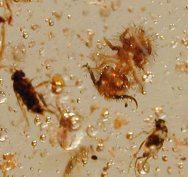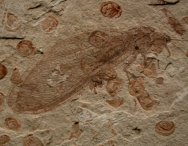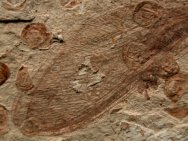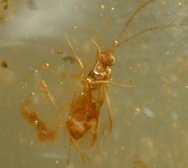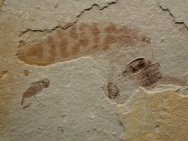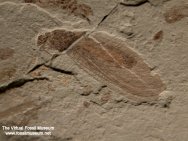|
Neuroptera
Fossil Insects (e.g., lacewings, antlions and snakeflies) |
Page
within: Insect Fossils Of related interest: Fossil Amber (Resin) |
|
The first Neuropterans are believed to have appeared during the Permian, almost 300 million years ago. The order is highly diverse today, including insects known by the common names lacewings, antlions and snakeflies. Some 4700 extant species of Neuroptera are known. We do not know how many species existed in the Cretaceous, but it was far less than today. As adults, all neuropterans have two pairs of membranous wings with an extensive pattern of veins and crossveins. At rest, the wings are folded flat over the abdomen or held tent-like over the body. Most species are rather weak fliers. The larvae of antlions and lacewings have specialized mouthparts with large, sickle-shaped mandibles and maxillae that interlock to form pincers. Once impaled on these pincers, a prey's body contents are sucked out through hollow food channels running between the adjacent surfaces of the mandibles and maxillae.
| ||||||||||||||||||||||||||
|
Fossil
Museum Navigation:
Home Geological Time Paleobiology Geological History Tree of Life Fossil Sites Fossils Evolution Fossil Record Museum Fossils |

